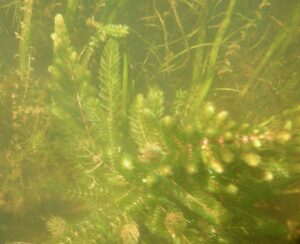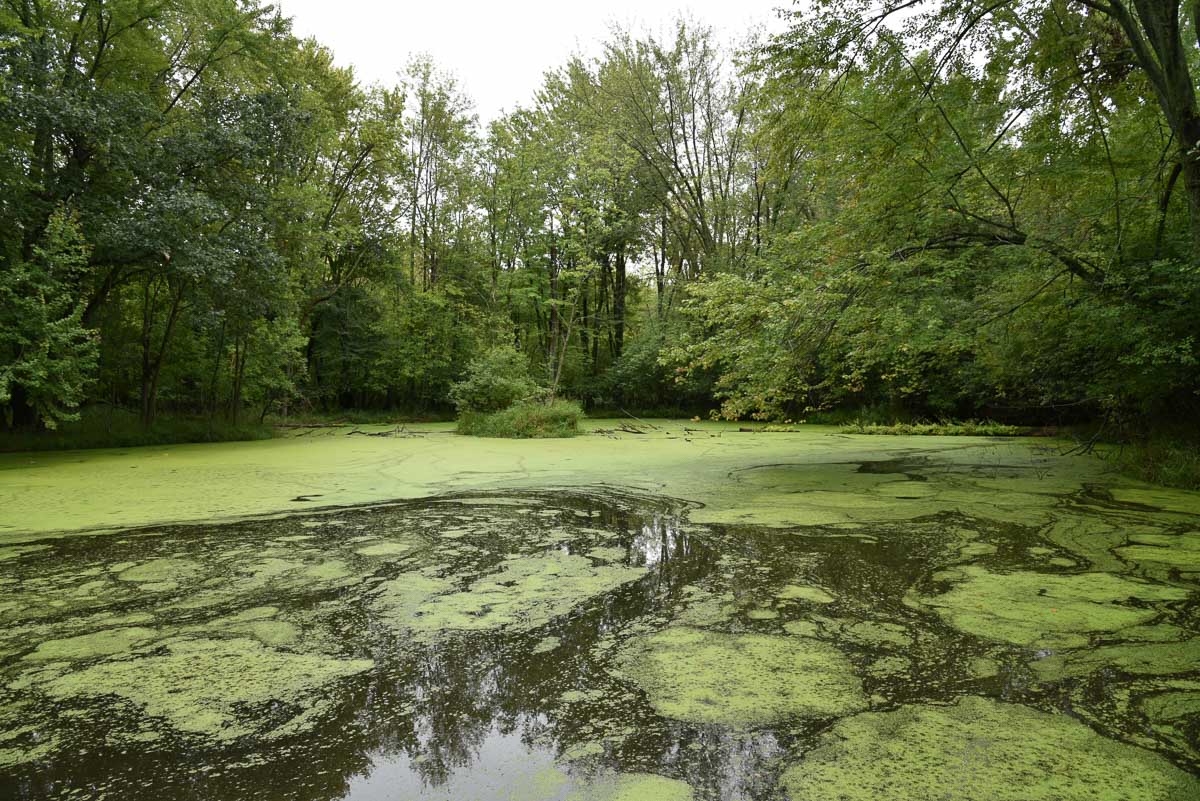
Other Name: Common Hornwort
Plant Family: Hornwort Family, Ceratophyllaceae
Wetland Indicator Status: OBL
Coontail or Hornwort1 (Ceratophyllum demersum) is one of our most common submergent aquatic plants. It gets its name from its resemblance to a raccoon’s tail. Its other common name, hornwort, derives from its achenes’ appearance (seeds) with three horn-like projections. This plant is sometimes rooted, but it is easily dislodged by waves, carp, boats, etc., and often it floats around free, becoming inter-tangled with other aquatic plants or masses of other coontail in backwaters of rivers and lakes, ditches, and ponds.
Time lapse video of Coontail growth in an aquarium.
What Good is Coontail
Although a native plant, coontail’s rapid growth, especially in nutrient-rich waters, can make it a nuisance in some navigation channels. Although not directly of high wildlife value, coontail plants are home to many aquatic invertebrates that feed ducks and small fish, so the plants are often consumed along with those animals. Coontail also provides excellent refuge for young game fish. Coontail can tolerate turbidity and excessive nutrients, making it one of the last aquatic plants found in highly nutrient-polluted waters. When the coontail begins to disappear, you have real problems.

Coontail’s hardiness and ability to grow well without a root system have made it a popular aquatic plant for freshwater aquariums. Without proper lighting, coontail can grow spindly. For live-bearing fish aquariums, coontail can be left to for a mass at the top of the aquarium and provide excellent refuge for the fry of guppies, platys, swordtails, mollies, etc. Regulations for collecting coontail in the wild can vary. Where it is legal, the plants can bring in hundreds of small invertebrates that can provide food for your fish but can also bring in disease. Anytime you have aquatic plants and animals, do not dispose of them in nearby lakes, rivers, or ponds. Non-native species can greatly alter or even destroy the natural ecosystem.
